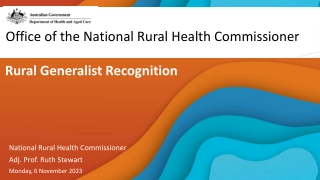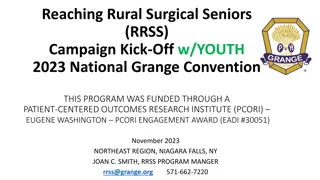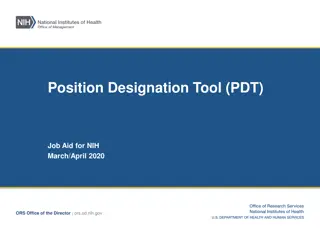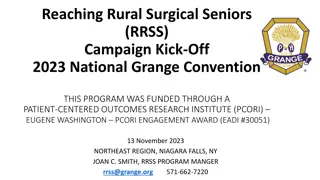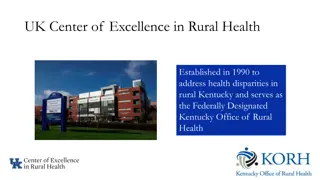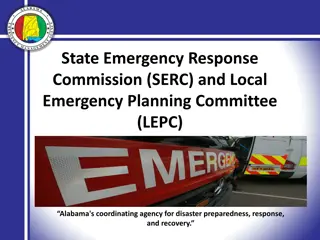Converting to Rural Emergency Hospital Designation at [Hospital Name] for Improved Access to Care
Rural hospitals across the country are facing financial challenges, with many closing down. Converting to a Rural Emergency Hospital designation can help maintain crucial healthcare services in [Community Name], ensuring access to care. The new designation provides financial support and guidelines for hospitals to meet necessary requirements while continuing to offer essential services to patients.
Download Presentation

Please find below an Image/Link to download the presentation.
The content on the website is provided AS IS for your information and personal use only. It may not be sold, licensed, or shared on other websites without obtaining consent from the author.If you encounter any issues during the download, it is possible that the publisher has removed the file from their server.
You are allowed to download the files provided on this website for personal or commercial use, subject to the condition that they are used lawfully. All files are the property of their respective owners.
The content on the website is provided AS IS for your information and personal use only. It may not be sold, licensed, or shared on other websites without obtaining consent from the author.
E N D
Presentation Transcript
Converting to the Rural Emergency Hospital Designation at [Hospital Name] Making Changes to Maintain Access to Care in [Community Name]
Rural Hospitals Are Struggling Throughout the Country 100 rural hospitals across the country have closed since 2005. Our community cannot afford to have [hospital name] added to that list. Declining population, volume-based reimbursement models, increased staffing expenses, and rising costs are just a few factors contributing to negative hospital margins. The COVID-19 pandemic exposed the financial fragility of rural hospitals when nonemergency procedures were postponed and revenue evaporated. Hospitals across Minnesota and the nation, especially those in rural communities, are in jeopardy because of rising costs and stagnate reimbursement. The new hospital designation is a way to help small communities keep a health care facility close to home. In 2022, the cost of providing health care in Minnesota increased drastically, with labor costs increasing by 7.4% and non-labor costs increasing by 9.5%.
Congress Establishes Rural Emergency Hospital Designation Congress established the new Rural Emergency Hospital (REH) designation in December 2020 in Section 125 of the Consolidated Appropriations Act, 2021 (Public Law 116-260). The final rules from the Centers for Medicare & Medicaid Services requires hospitals to eliminate all inpatient beds in exchange for reimbursement at the Medicare outpatient fee schedule level plus 5% and an average facility fee payment of $3.2 million a year.
REH Requirements Converted REH hospitals must always: Have a clinician on call. Staff their emergency departments 24 hours a day, year-round. Implement a quality assurance and performance improvement program Have a per-patient average length of stay under 24 hours. Maintain an infection prevention program.
Why REH Makes Sense The new designation provides financial support needed to maintain crucial community services. The average facility fee payment of $3.2 million will provide needed consistent revenue not tied to the number of patients the hospital sees. While the designation requires per-patient average length of stay to be under 24 hours, you will still be able to stay overnight at the hospital if an observation is required. The designation allows our hospitals to continue offering vital service lines frequented by most of our patients. Those services include: Laboratory services Imaging and radiology services Outpatient surgeries
Expected Timeline [DATE] Communication to [HOSPITAL] board. [DATE] Communication to staff. [DATE] Public announcement. [DATE] Transition begins. [DATE] Estimated transition completion.
![Converting to Rural Emergency Hospital Designation at [Hospital Name] for Improved Access to Care](https://cdn1.slideorbit.com/317406/converting-to-the-rural-emergency-hospital-n.jpg)

